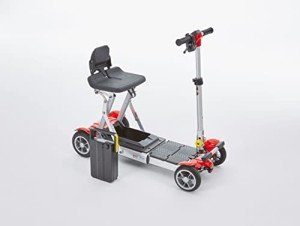Understanding Mobility Aids: Enhancing Independence and Quality of Life
As society continues to age and people increasingly look for ways to maintain self-reliance, the need for mobility aids has actually never been more pertinent. Mobility aids, which incorporate a variety of devices designed to help individuals with walking or walking around, play a vital function in promoting mobility, boosting safety, and enhancing general quality of life. This post will explore the different types of mobility aids, their advantages, considerations for selection, and answer some often asked questions.
Types of Mobility Aids
Different mobility aids are offered, each developed to address particular needs. The following table summarizes some of the most typical types of mobility aids and their functions.
| Kind Of Mobility Aid | Description | Best Suited For | Key Features |
|---|---|---|---|
| Walking sticks | A portable stick offering assistance and balance. | Individuals who require very little support. | Light-weight, portable, adjustable height. |
| Walkers | Four-legged frames providing stability. | Those requiring significant support while walking. | Foldable, some with wheels, included safety features. |
| Rollators | Wheeled walkers with a seat for resting. | People requiring mobility with the choice to rest. | Brakes, baskets for personal products, adjustable height. |
| Wheelchairs | Chairs with wheels for people with restricted mobility. | Those not able to stroll or needing comprehensive support. | Manual or powered options, adjustable seating. |
| Scooters | Motorized devices for bigger ranges. | People with minimal endurance however requiring independence. | Various sizes and styles, often portable. |
| Crutches | Assistance devices placed under the arms or lower arms. | Individuals recuperating from lower limb injuries. | Adjustable, lightweight, requires upper body strength. |
| Stairlifts | Mechanical devices for moving between floors. | Users facing challenges in multi-level homes. | Personalized for various staircases, automated. |
Benefits of Mobility Aids
Mobility aids provide a range of advantages that can substantially improve the lives of people facing mobility difficulties. Some notable advantages include:
- Increased Independence: Mobility aids empower individuals to move easily without counting on others for assistance, consequently enhancing their confidence and self-esteem.
- Boosted Safety: Using mobility aids can minimize the danger of falls and injuries, especially for older adults or those with balance concerns.
- Enhanced Quality of Life: By facilitating mobility, people can engage in social activities, go to events, and take pleasure in life more completely, contributing to much better emotional and psychological health.
- Rehab Support: After surgery or injury, mobility aids supply essential assistance and stability, assisting in healing and rehab procedures.
- Availability: Many mobility aids are developed to be utilized both indoors and outdoors, making sure that individuals can navigate different environments with ease.
Elements to Consider When Choosing Mobility Aids
Choosing the appropriate mobility help needs mindful factor to consider of a number of elements, including:
| Factor | Considerations |
|---|---|
| User's Needs | Examine the level of mobility required; think about whether the user requires short-term or long-lasting support. |
| Physical Limitations | Evaluate the user's strength, balance, and coordination to identify the very best kind of aid. |
| Setting | Think about the main environments where the help will be used, such as home, outdoors, or particular terrains. |
| Weight and Portability | Make sure that the selected gadget is manageable concerning portability and storage, especially for outside usage. |
| Budget | Mobility aids been available in a variety of rates; think about insurance protection and readily available funding alternatives. |
| Adjustability | Choose aids that can be changed for height and convenience to accommodate development or altering requirements. |
Frequently Asked Questions About Mobility Aids
1. How do I know if I need a mobility help?
Many elements can signal the requirement for a mobility help, such as trouble walking or balancing, fatigue while standing, or a recent surgery affecting mobility. Consulting with a health care expert can provide assistance tailored to specific needs.
2. What kinds of mobility aids are covered by insurance coverage?
Protection differs in between insurers, however many supply options for durable medical equipment, which generally includes wheelchairs, walkers, and some types of walking sticks. Talk to your insurance company for particular protection info.
3. Can mobility aids be used outdoors?
Yes, many modern-day mobility aids are designed for outdoor use. compact electric scooters , scooters, and some walkers are equipped with functions for stability and ease of use on different surface.
4. How do I maintain my mobility help?
Routine maintenance includes looking for any wear and tear, guaranteeing that parts such as wheels, brakes, and frames are working correctly, and cleaning the equipment as needed. Following the producer's standards is important for security.
5. Exists a risk of becoming reliant on mobility aids?
While some users might end up being reliant on mobility aids, they are developed to promote independence and mobility. Slowly utilizing a mobility aid can improve self-confidence and aid maintain physical strength and coordination.
Mobility aids are vital tools that empower people to conquer physical obstacles, promoting independence and improving quality of life. By comprehending the numerous kinds of mobility aids available, their benefits, and essential aspects for consideration, households and caretakers can make informed decisions that best satisfy the requirements of their enjoyed ones. With the ideal assistance, those with mobility difficulties can lead satisfying and active lives, complimentary to check out the world around them.

